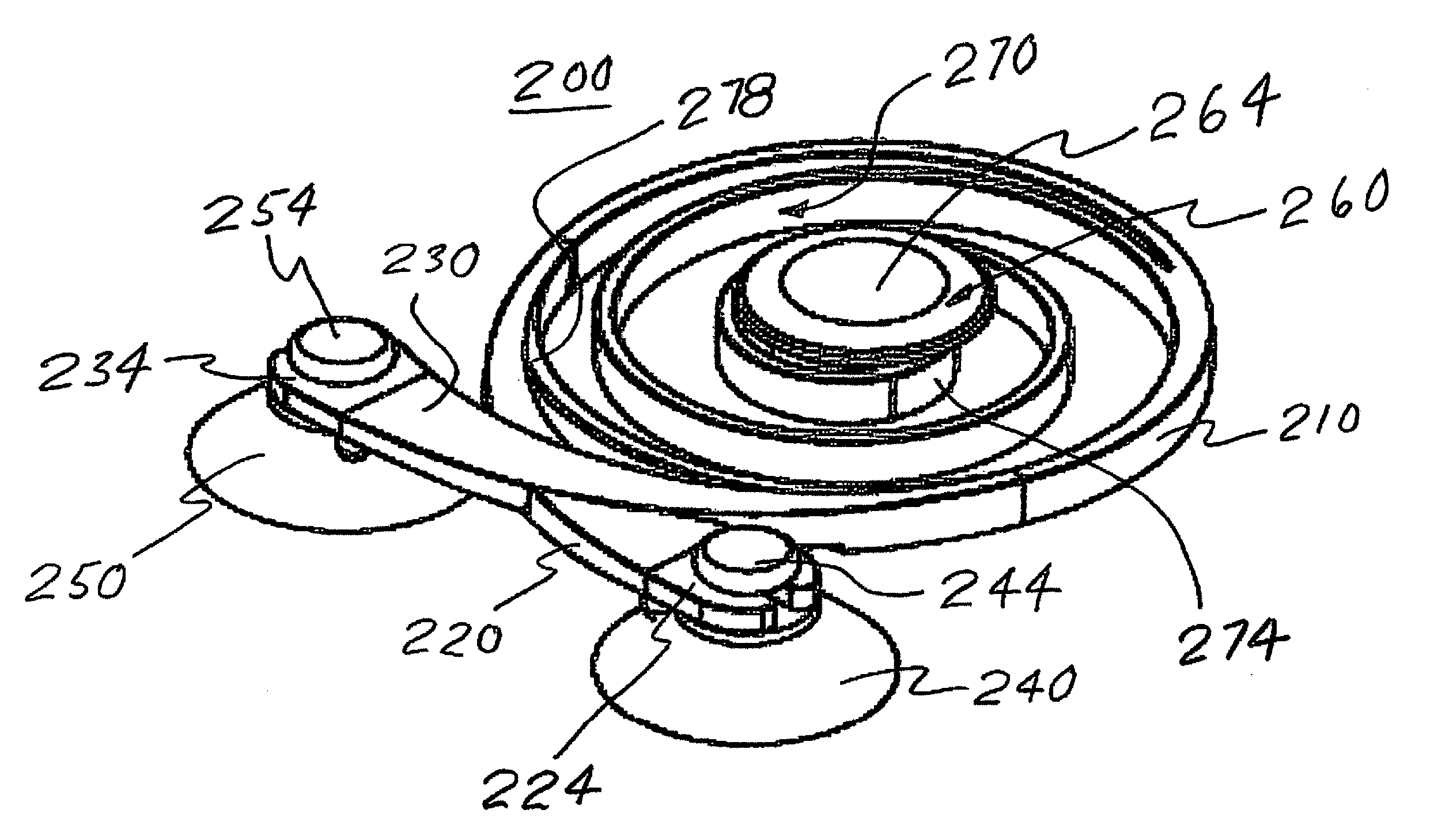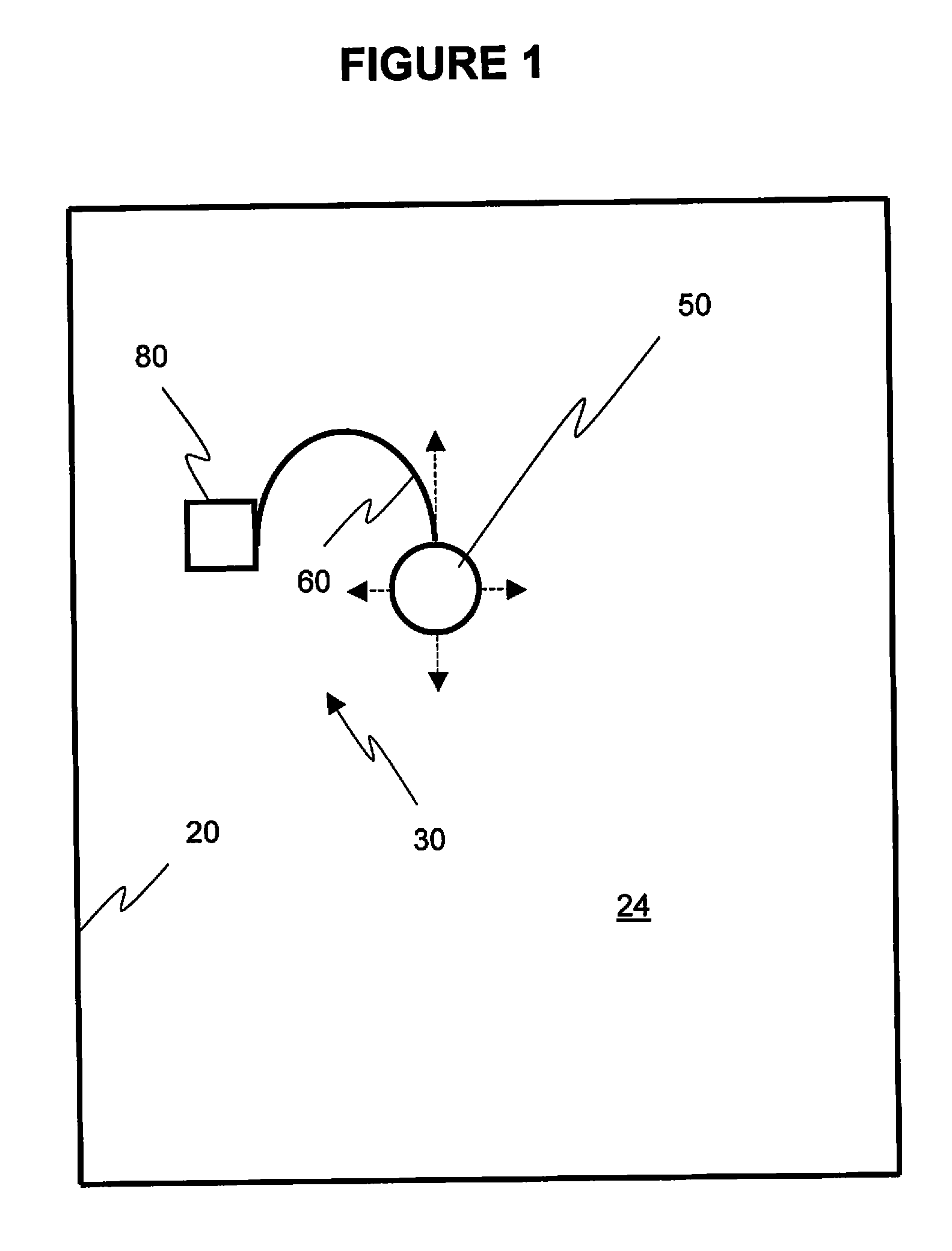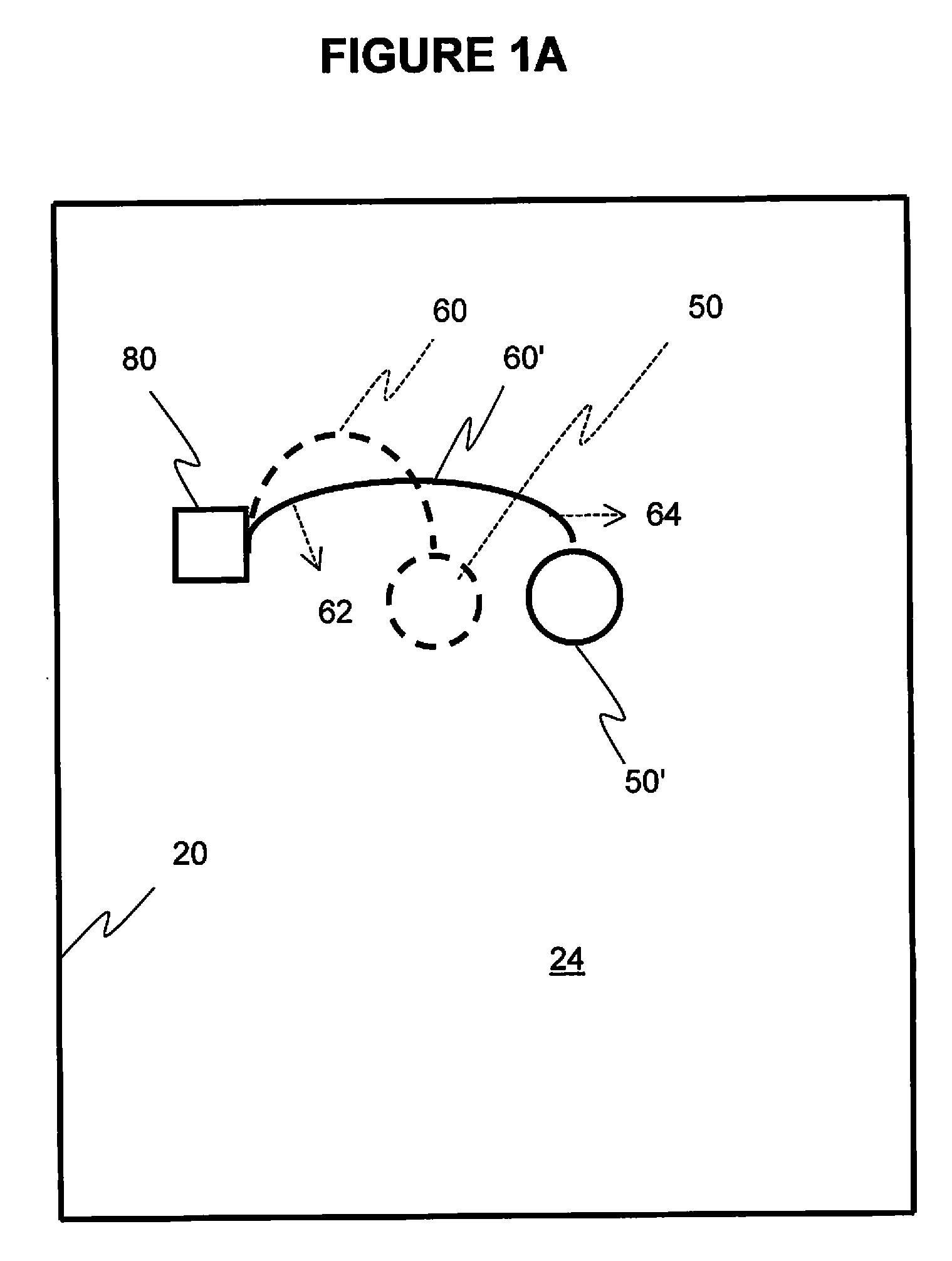Devices and processes for data input
a data input and touch-sensitive technology, applied in the direction of electric digital data processing, instruments, computing, etc., can solve the problems of touch-sensitive location of interest, user may lose the position of touch-sensitive location, touch-sensitive location of interest, etc., to achieve the effect of reducing the likelihood of simultaneous conta
- Summary
- Abstract
- Description
- Claims
- Application Information
AI Technical Summary
Benefits of technology
Problems solved by technology
Method used
Image
Examples
Embodiment Construction
[0038]A central feature of the invention is the incorporation of a movable button which when force is applied thereto comes into electrical contact with a touch-sensitive location on an electrically sensitive user interface surface. The advantageous mounting structure for the button—a member, especially a segmented arm—affords the desired range of motion. Effecting contact via a button provides the necessary user feedback concerning achievement of such contact. Moreover, in this manner, the button can readily be translated across the surface in “real time” during use. This means that not only is the button accurately positionable over a single touch-sensitive location, it further can be positioned over each of a plurality of them in sequence, one at a time, without unintended touching of another location on the surface.
[0039]The invention is useful with the general category of data processing devices comprising an electrically sensitive user interface surface, for instance, a touchs...
PUM
 Login to View More
Login to View More Abstract
Description
Claims
Application Information
 Login to View More
Login to View More - R&D
- Intellectual Property
- Life Sciences
- Materials
- Tech Scout
- Unparalleled Data Quality
- Higher Quality Content
- 60% Fewer Hallucinations
Browse by: Latest US Patents, China's latest patents, Technical Efficacy Thesaurus, Application Domain, Technology Topic, Popular Technical Reports.
© 2025 PatSnap. All rights reserved.Legal|Privacy policy|Modern Slavery Act Transparency Statement|Sitemap|About US| Contact US: help@patsnap.com



